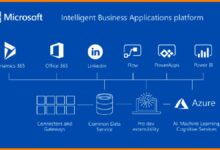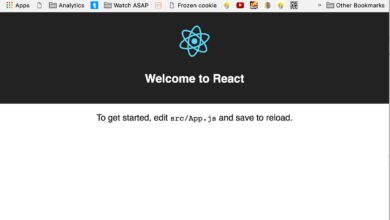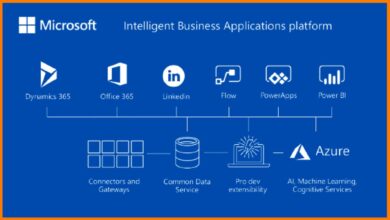Azure What Is: 7 Powerful Insights You Must Know Now
Ever wondered what lies behind the buzzword ‘Azure’? Let’s demystify Microsoft Azure and uncover what it truly is, how it works, and why it’s revolutionizing cloud computing today.
Azure What Is: The Ultimate Introduction to Microsoft’s Cloud Powerhouse

When people ask, ‘Azure what is?’, they’re often diving into the world of cloud computing for the first time. Microsoft Azure is not just another tech term—it’s a full-fledged cloud platform that powers businesses, startups, and governments worldwide. Launched in 2010 as Windows Azure, it has evolved into one of the top three cloud service providers globally, alongside Amazon Web Services (AWS) and Google Cloud Platform (GCP).
Azure provides a wide range of services including computing, analytics, storage, networking, and more—all delivered through Microsoft’s global network of data centers. Whether you’re hosting a simple website or running AI-driven analytics at scale, Azure offers the tools and infrastructure to make it happen. Its hybrid capabilities also allow seamless integration between on-premises environments and the cloud, making it a favorite among enterprise clients.
According to Microsoft, over 95% of Fortune 500 companies use Azure today. This widespread adoption is driven by its deep integration with Microsoft 365, Active Directory, and other enterprise tools. For developers, Azure offers support for multiple programming languages, frameworks, and operating systems, making it highly flexible and developer-friendly.
Origins and Evolution of Azure
Azure began as a platform-as-a-service (PaaS) offering focused on application hosting. Over the years, it expanded into infrastructure-as-a-service (IaaS), software-as-a-service (SaaS), and now includes advanced capabilities like artificial intelligence, Internet of Things (IoT), and quantum computing.
The rebranding from Windows Azure to simply Microsoft Azure in 2014 marked a strategic shift toward positioning it as a multi-platform, open-source-friendly cloud ecosystem. This openness has attracted Linux users, open-source developers, and non-Microsoft technologies, broadening its appeal far beyond traditional Windows environments.
azure what is – Azure what is menjadi aspek penting yang dibahas di sini.
- 2010: Launched as Windows Azure
- 2014: Rebranded to Microsoft Azure
- 2016: Introduced Azure Stack for hybrid cloud
- 2020: Expanded AI and machine learning tools
- 2023: Launched Azure AI Studio and strengthened sustainability commitments
How Azure Compares to Other Cloud Providers
While AWS leads in market share, Azure stands out due to its seamless integration with Microsoft products like Office 365, Dynamics 365, and Active Directory. This makes migration easier for organizations already invested in the Microsoft ecosystem.
Google Cloud excels in data analytics and machine learning, but Azure offers a more balanced portfolio across enterprise needs. A key differentiator is Azure’s hybrid cloud strategy, which allows businesses to run workloads both on-premises and in the cloud using Azure Arc and Azure Stack.
“Azure is not just about technology; it’s about transformation.” — Satya Nadella, CEO of Microsoft
Azure What Is and How It Powers Modern Businesses
Understanding ‘Azure what is’ goes beyond technical definitions—it’s about recognizing how it enables digital transformation. From small startups to multinational corporations, Azure provides scalable, secure, and cost-effective solutions that adapt to business needs.
One of Azure’s biggest strengths is its ability to support hybrid and multi-cloud environments. This means companies don’t have to abandon their existing infrastructure to go cloud-native. Instead, they can gradually migrate workloads while maintaining control and compliance.
For example, a financial institution might keep sensitive customer data on-premises for regulatory reasons while using Azure for customer-facing web applications and data analytics. This flexibility reduces risk and allows for incremental innovation.
Real-World Use Cases of Azure
Organizations across industries leverage Azure for diverse purposes. Here are some notable examples:
azure what is – Azure what is menjadi aspek penting yang dibahas di sini.
- Healthcare: Partners HealthCare uses Azure to process medical imaging and accelerate research using AI.
- Retail: ASOS, the online fashion retailer, runs its e-commerce platform on Azure, handling millions of transactions daily.
- Manufacturing: Rolls-Royce uses Azure IoT to monitor jet engines in real time, predicting maintenance needs before failures occur.
- Education: Arizona State University uses Azure to power personalized learning experiences and student success analytics.
These cases show that Azure isn’t just for IT departments—it’s a strategic enabler across functions like marketing, operations, customer service, and R&D.
Cost Efficiency and Scalability Benefits
One of the most compelling reasons businesses adopt Azure is cost efficiency. With a pay-as-you-go pricing model, organizations only pay for the resources they consume. This eliminates the need for large upfront investments in hardware and data centers.
Additionally, Azure’s autoscaling features allow applications to automatically adjust computing power based on demand. During peak shopping seasons, an e-commerce site can scale up to handle traffic spikes and scale down afterward—optimizing costs without sacrificing performance.
Azure also offers reserved instances and hybrid benefit discounts. For instance, if you already own Windows Server licenses, you can apply them to Azure Virtual Machines and save up to 40% on compute costs.
Azure What Is: Core Services and Capabilities Explained
To fully grasp ‘Azure what is’, you need to understand its core service categories. Microsoft organizes Azure offerings into several key domains: Compute, Storage, Networking, Databases, AI & Machine Learning, and Security.
Each of these domains contains dozens of individual services tailored to specific use cases. Let’s break them down to see how they work together to form a comprehensive cloud ecosystem.
azure what is – Azure what is menjadi aspek penting yang dibahas di sini.
Compute Services: Powering Your Applications
Azure Compute services allow you to run applications and workloads in the cloud. The main options include:
- Azure Virtual Machines (VMs): Flexible, scalable VMs for any workload, supporting both Windows and Linux.
- Azure App Service: A fully managed platform for building, deploying, and scaling web apps and APIs.
- Azure Functions: A serverless compute service that runs code in response to events without managing infrastructure.
- Azure Kubernetes Service (AKS): Managed Kubernetes for deploying and managing containerized applications.
These services cater to different levels of control and abstraction. While VMs give full control over the OS, serverless options like Functions abstract away infrastructure entirely, letting developers focus solely on code.
Storage and Database Solutions
Azure offers a variety of storage options depending on your needs:
- Azure Blob Storage: Ideal for unstructured data like images, videos, and backups.
- Azure Files: Cloud file shares accessible via SMB or NFS protocols.
- Azure Disk Storage: High-performance block storage for VMs.
- Azure Data Lake Storage: Designed for big data analytics workloads.
For databases, Azure provides both relational and non-relational options:
- Azure SQL Database: A fully managed relational database as a service (DBaaS).
- Azure Cosmos DB: A globally distributed, multi-model database for low-latency applications.
- Azure Database for MySQL/PostgreSQL: Managed open-source database services.
These services ensure data is stored securely, replicated across regions, and backed up automatically—critical for business continuity and disaster recovery.
Azure What Is: Understanding Cloud Deployment Models
Another essential aspect of ‘azure what is’ involves understanding the different cloud deployment models Azure supports: Public Cloud, Private Cloud, Hybrid Cloud, and Multi-Cloud.
azure what is – Azure what is menjadi aspek penting yang dibahas di sini.
Each model serves different organizational needs, especially when balancing control, compliance, scalability, and cost.
Public Cloud: The Default Azure Experience
When most people think of Azure, they’re referring to the public cloud—resources hosted in Microsoft’s global data centers and shared among multiple customers (tenants). This model offers maximum scalability, low maintenance, and rapid deployment.
Public cloud is ideal for web applications, development environments, and data analytics projects where high availability and elasticity are crucial. Microsoft manages all underlying hardware, networking, and security, allowing businesses to focus on innovation.
Learn more about Azure’s public cloud offerings at Microsoft’s official page.
Hybrid Cloud: Bridging On-Premises and Cloud
Many enterprises operate in regulated industries (like finance or healthcare) where data sovereignty and compliance are paramount. For these organizations, a pure public cloud approach isn’t feasible.
Azure addresses this with hybrid cloud solutions like Azure Stack and Azure Arc. Azure Stack brings Azure services into on-premises data centers, enabling consistent management and DevOps practices across environments.
azure what is – Azure what is menjadi aspek penting yang dibahas di sini.
Azure Arc extends Azure management to servers and Kubernetes clusters running anywhere—on-premises, at the edge, or in other clouds. This unified control plane simplifies governance, security policy enforcement, and monitoring.
“Hybrid is not a compromise—it’s a strategic choice.” — Microsoft Azure Team
Multi-Cloud Strategies with Azure
Increasingly, businesses adopt multi-cloud strategies to avoid vendor lock-in, optimize costs, and leverage best-of-breed services from different providers.
Azure supports multi-cloud through tools like Azure Migrate, which helps assess and move workloads from AWS or Google Cloud to Azure. It also integrates with third-party tools like HashiCorp Terraform and Ansible for infrastructure automation across clouds.
Moreover, Azure’s partnership with Adobe, SAP, and ServiceNow ensures seamless interoperability in complex IT landscapes.
Azure What Is: Security, Compliance, and Identity Management
Security is often a top concern when moving to the cloud. So, when asking ‘azure what is’, it’s vital to understand how Microsoft ensures data protection, regulatory compliance, and identity control.
Azure operates under a shared responsibility model: Microsoft secures the infrastructure, while customers are responsible for securing their data, applications, and access controls.
azure what is – Azure what is menjadi aspek penting yang dibahas di sini.
This means Microsoft handles physical security, network infrastructure, and hypervisor security, while users must configure firewalls, encrypt data, manage user permissions, and monitor for threats.
Built-In Security Tools and Features
Azure provides a robust suite of security services:
- Azure Security Center: Now part of Microsoft Defender for Cloud, it offers unified security management and advanced threat protection across hybrid cloud workloads.
- Azure Firewall: A managed, cloud-native firewall service for network traffic filtering.
- Azure DDoS Protection: Protects applications from distributed denial-of-service attacks.
- Azure Information Protection: Classifies and protects sensitive documents and emails.
These tools help detect vulnerabilities, prevent breaches, and respond to incidents in real time.
Compliance and Global Certifications
Azure complies with more regulatory standards than any other cloud provider, including GDPR, HIPAA, ISO 27001, SOC 1/2/3, and FedRAMP. This makes it suitable for use in highly regulated sectors like government, healthcare, and finance.
Microsoft publishes detailed compliance documentation through the Microsoft Compliance Manager, allowing organizations to assess their alignment with specific regulations.
Identity and Access Management with Azure AD
Azure Active Directory (Azure AD), now known as Microsoft Entra ID, is central to identity management in Azure. It enables single sign-on (SSO), multi-factor authentication (MFA), conditional access policies, and identity governance.
azure what is – Azure what is menjadi aspek penting yang dibahas di sini.
With Azure AD, users can securely access thousands of SaaS applications (like Salesforce, Dropbox, and Office 365) using one set of credentials. Administrators can enforce policies such as requiring MFA when accessing sensitive data from outside the corporate network.
This identity-first approach is critical in today’s zero-trust security model, where trust is never assumed, even inside the network perimeter.
Azure What Is: AI, Machine Learning, and Innovation Frontiers
One of the most exciting aspects of ‘azure what is’ lies in its cutting-edge capabilities in artificial intelligence and machine learning. Azure isn’t just about infrastructure—it’s a platform for innovation.
Microsoft has invested heavily in democratizing AI, making advanced tools accessible to developers, data scientists, and even non-technical users.
Azure AI Services: Ready-to-Use Intelligence
Azure AI offers pre-built APIs that add intelligent features to applications without requiring deep AI expertise. These include:
- Computer Vision: Analyze images, detect objects, read text, and generate descriptions.
- Speech Services: Convert speech to text, text to speech, and enable voice translation.
- Language Service: Understand sentiment, extract key phrases, and classify text.
- Translator: Real-time language translation for text and speech.
- Form Recognizer: Extract data from forms, invoices, and receipts using AI.
These services are used in chatbots, customer service automation, accessibility tools, and content moderation systems.
azure what is – Azure what is menjadi aspek penting yang dibahas di sini.
Custom Machine Learning with Azure Machine Learning
For organizations building custom AI models, Azure Machine Learning provides a comprehensive environment for training, deploying, and managing machine learning workflows.
It supports popular frameworks like TensorFlow, PyTorch, and scikit-learn, and integrates with Jupyter Notebooks, Visual Studio Code, and MLflow. Data scientists can use automated ML (AutoML) to quickly test algorithms and find the best-performing model.
Azure ML also emphasizes MLOps—applying DevOps principles to machine learning—to ensure models are reproducible, monitored, and updated in production.
Explore Azure’s AI capabilities at Azure AI Services.
Responsible AI and Ethical Guidelines
As AI becomes more powerful, ethical considerations grow in importance. Microsoft has established six principles for responsible AI: fairness, reliability, privacy, inclusiveness, transparency, and accountability.
Azure provides tools like Responsible AI Dashboard and Fairlearn to help developers evaluate and mitigate bias in AI models. These tools allow teams to visualize model performance across different demographic groups and take corrective actions.
azure what is – Azure what is menjadi aspek penting yang dibahas di sini.
“Technology should empower every person and every organization on the planet to achieve more.” — Satya Nadella
Azure What Is: Getting Started and Learning Resources
Now that you understand ‘azure what is’, you might be wondering how to get started. Whether you’re a developer, IT professional, or business leader, Azure offers accessible entry points and abundant learning resources.
The best way to begin is by creating a free Azure account, which includes $200 in credits and access to over 25 services for 12 months.
Steps to Create Your First Azure Account
Follow these steps to start exploring Azure:
- Go to Azure Free Account page.
- Sign up using your email (Microsoft account or work/school account).
- Provide basic personal and payment information (no charges until free tier ends).
- Verify your identity via phone call or text.
- Start using the Azure portal to deploy your first resource, like a virtual machine or web app.
Once logged in, you’ll access the Azure portal—a web-based interface for managing all your cloud resources.
Free Learning Paths and Certifications
Microsoft Learn offers hundreds of free, interactive modules to help you build Azure skills. Popular learning paths include:
- Azure Fundamentals (AZ-900): Ideal for beginners, covering core concepts and services.
- Azure Administrator (AZ-104): For IT pros managing Azure environments.
- Azure Developer (AZ-204): For coders building cloud applications.
- Azure Security Engineer (AZ-500): For cybersecurity professionals.
Earning certifications not only validates your expertise but also boosts career prospects in cloud computing.
azure what is – Azure what is menjadi aspek penting yang dibahas di sini.
Community and Support Ecosystem
Azure has a vibrant global community of developers, MVPs (Most Valuable Professionals), and user groups. Platforms like Stack Overflow, Microsoft Q&A, and GitHub host active discussions and code samples.
Microsoft also offers various support plans—from basic (free) to premier (enterprise-level)—with 24/7 technical assistance, SLAs, and architectural guidance.
What is Azure used for?
Azure is used for a wide range of purposes including hosting websites and applications, storing and analyzing data, running virtual machines, implementing AI and machine learning models, managing IoT devices, and securing enterprise IT environments. It supports both cloud-native development and hybrid cloud scenarios.
Is Azure only for Windows?
No, Azure supports both Windows and Linux environments. It also works with open-source technologies like Python, Node.js, MySQL, PostgreSQL, Kubernetes, and more. Azure is designed to be platform-agnostic and developer-friendly.
azure what is – Azure what is menjadi aspek penting yang dibahas di sini.
How does Azure pricing work?
Azure uses a pay-as-you-go pricing model where you pay only for the resources you use. There are also options for reserved instances (up to 72% savings), free tiers, and hybrid use benefits. Costs vary based on service type, region, and usage duration.
Can I migrate my existing apps to Azure?
Yes, Azure provides tools like Azure Migrate and Azure Site Recovery to assess, plan, and migrate on-premises applications and servers to the cloud with minimal downtime. Many organizations successfully transition from AWS, Google Cloud, or physical servers to Azure.
Is Azure secure?
Azure is one of the most secure cloud platforms, with built-in encryption, threat detection, compliance certifications, and identity management tools. However, security is a shared responsibility—Microsoft secures the infrastructure, while customers must configure access controls, monitor activity, and protect their data.
In conclusion, understanding ‘azure what is’ reveals a powerful, versatile, and secure cloud platform that drives innovation across industries. From startups to Fortune 500 companies, Azure enables digital transformation through scalable computing, intelligent services, and hybrid flexibility. Whether you’re exploring cloud basics or building AI-powered solutions, Azure offers the tools, support, and global infrastructure to succeed. The journey into the cloud starts with a single question—and now you have the answer.
Further Reading:









